Who are those people on your Swedish banknotes?

Who are those people depicted on your banknotes? Sweden may be on the road to becoming a cashless society, but there's still plenty you can learn just from looking at the money in your wallet.
This article is available to Members of The Local. Read more about membership here.
Learning about Swedish history and culture can be as easy as looking in your wallet. Each banknote you carry has a story to tell about a famous figure from modern Swedish history on one side, and a geographical area of Sweden closely connected to his or her life on the other.
The six banknotes – ranging in value from 20 to 1000 kronor and released in two stages between in 2015 and 2016 – feature three women and three men who left an indelible impression not only on Swedish history, but world history as well. Learning a little about them might just help you feel more at home here in Sweden, not to mention make you sound very knowledgeable during fika small talk.
To get you started, I've put together a short history on the significance of each person and place, along with links to help you explore further on your own.
20 kronor – Writer Astrid Lindgren (1907-2002), Småland
Best known as the author of the Pippi Longstocking series of books, which have been translated into 70 languages, it might surprise some to learn that Astrid Lindgren was a prolific writer of dozens of other books for young people, as well as numerous plays, film scripts and songs. In addition, she wrote and advocated for children's rights and political and social issues in Sweden and abroad, including segregation in the United States.
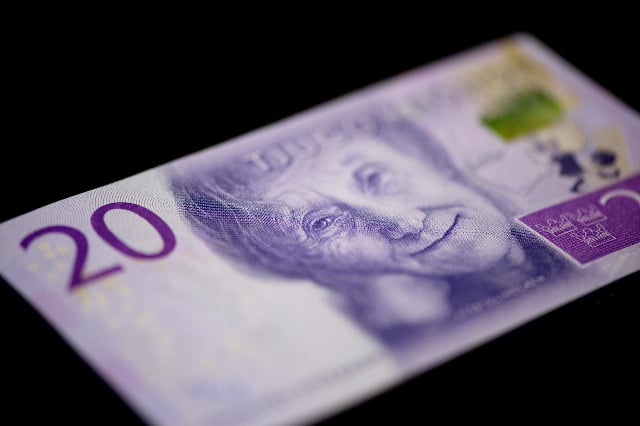
Astrid Lindgren was born in Småland in south-eastern Sweden. Photo: Jessica Gow/TT
In a 1958 article in Skolbiblioteket (The School Library) magazine, Lindgren wrote: "I want to write for a readership that can create miracles. Children create miracles when they read. That's why children need books."
Lindgren flexed her political power to full effect in 1976 when she contributed a political masterpiece disguised as a fairy tale to Swedish newspaper Expressen entitled Pomperipossa i Monismania. Described as "a blistering attack on the Social Democratic government and its taxation policies", it is credited with contributing to that party's government being voted out of power later that year.
On the flip side of Lindgren's banknote is the province of Småland, a nod to her birthplace, Näs, which is located near Vimmerby in Kalmar county. While young fans of Astrid Lindgren enjoy Astrid Lindgren's World theme park in Vimmerby, adults can appreciate the author at the nearby Astrid Lindgren's Näs culture center.
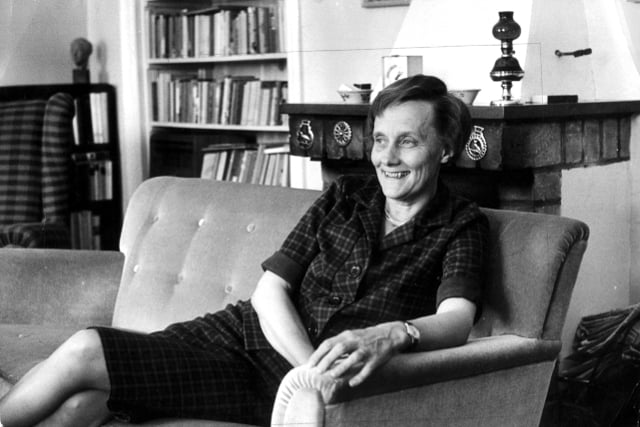
Astrid Lindgren in her living room in 1962. Photo: TT
50 kronor – Musician Evert Taube (1890-1976), Bohuslän
Born in Gothenburg, Bohuslän province, to a father who worked as a ship captain and lighthouse keeper, it's little surprise that the sea was an important influence on Swedish composer and musician Evert Taube. His travels as a merchant seaman in the early 1900s carried him around the world, including five years in South America, where he was so taken with the musical rhythms that he incorporated them into his own music.
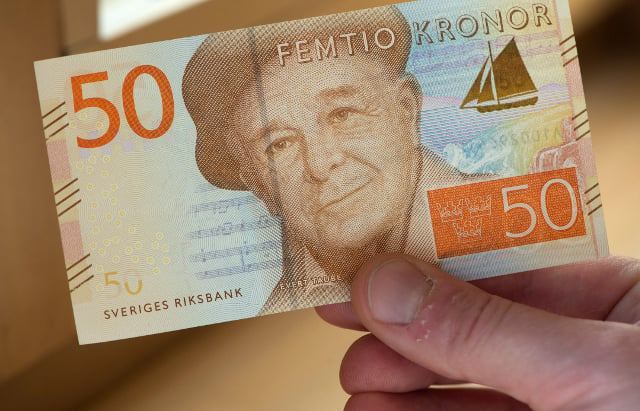
Evert Taube travelled the world as a merchant seaman. Photo: Fredrik Sandberg/TT
On returning to Sweden, he helped popularize the tango in his home country with songs like Fritiof och Carmencita (1937). But it was as a musician of Swedish ballads that he gained his greatest popularity and respect. American scholar of Scandinavian literature Susan Brantly wrote, "Evert Taube belongs to Sweden's strong tradition of troubadours and is one of its best-known and loved representatives."
Like several other Swedes featured on the country's banknotes, Taube applied his talent and influence to lobbying for social and political causes, with a particular passion for the environment. His 1971 song Änglamark, which he wrote for the Swedish film Äppelkriget, became the anthem for the Swedish environmental movement of the 1970s, and is today the name of a branded range of organic foods sold by Swedish supermarket chain Coop.
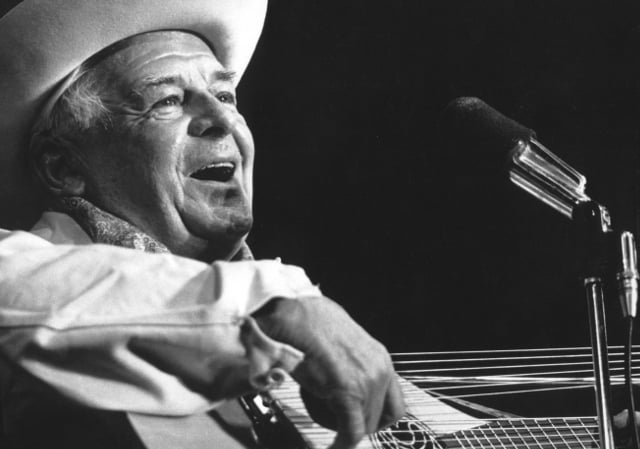
Evert Taube performing at Gröna Lund, Stockholm. Photo: Ragnhild Haarstad/TT
100 kronor – Actress Greta Garbo (1905-1990), Stockholm
A woman who needs little introduction, actress Greta Garbo was born in Stockholm as Greta Lovisa Gustafsson. It was under this name that she was discovered by MGM executive Louis B. Mayer when he saw her in the 1924 Swedish film, Gösta Berlings saga.
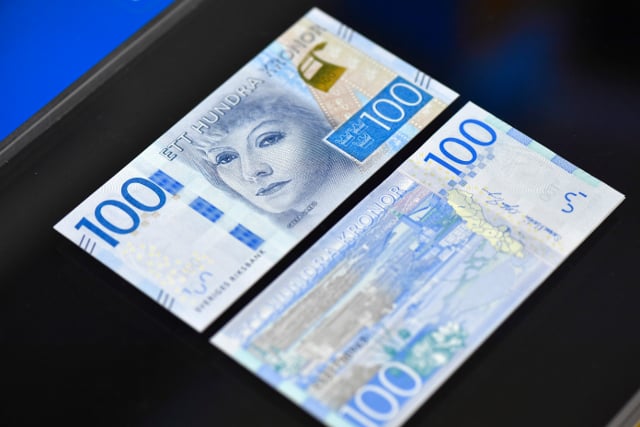
Greta Garbo, one of Sweden's most famous Hollywood stars. Photo: Anders Wiklund/TT
The film was based on the novel by another Swedish woman who has appeared on Swedish currency: Selma Lagerlöf (1858-1940). Published in 1891, Lagerlöf's debut novel launched a successful career that led to her becoming the first woman to win the Nobel Prize in Literature in 1909. As the first woman on a Swedish banknote, she was featured on the 20 kronor note from 1991 to 1995.
Although Garbo's Hollywood success meant that she spent much of her time in the United States and eventually became an American citizen, she was at her happiest and most comfortable when in Sweden. Writing to a friend in 1960, she wrote longingly: "I just think of how glorious it will be to come home. It will feel like coming out from a lovely bathe. Just imagine being able to walk about in peace, round all my old haunts."
There are plenty of Garbo's "old haunts" still to be found in Sweden, including Stockholm's Grand Hotel and her summer villa on the island of Ingarö.
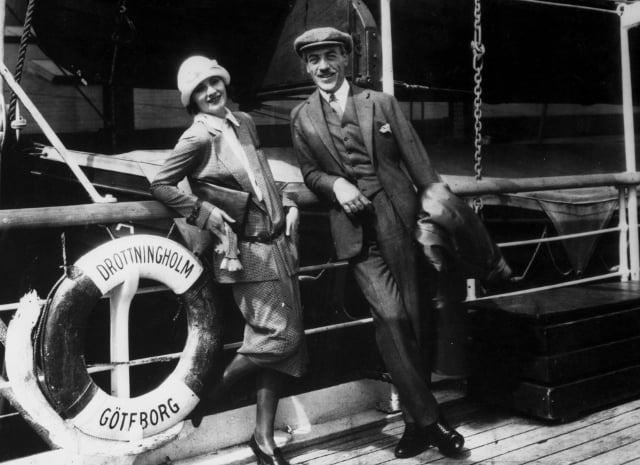
Greta Garbo on her way to New York with director Mauritz Stiller in 1925. Photo: TT
200 kronor – Film Director Ingmar Bergman (1918-2007), Gotland
The banknote featuring Ingmar Bergman, one of the most famous and influential filmmakers in cinematic history, highlights on its reverse the part of Sweden most closely associated with him: Gotland. Although born in Uppsala, Bergman loved the island of Fårö, where he lived, shot films like Through a Glass Darkly (1961), and ultimately died.
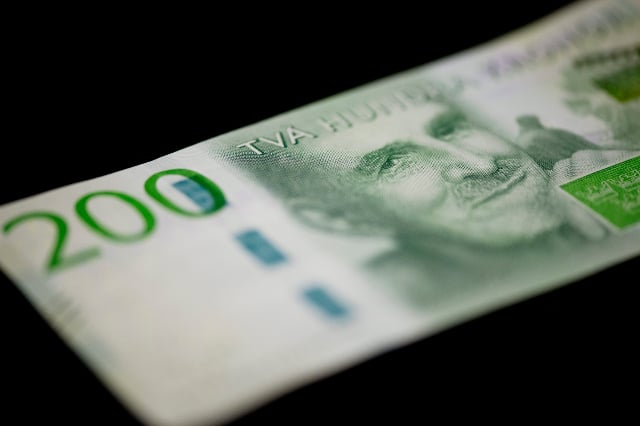
Ingmar Bergman featured on the 200 kronor note. Photo: Jessica Gow/TT
Bergman masterpieces like The Seventh Seal (1957), Scenes from a Marriage (1973), and Fanny and Alexander (1982), not only became famous internationally, they also greatly influenced individual directors and the film industry in general. In an article following Bergman's death, American film critic and Time magazine editor Richard Corliss wrote, "For a generation of budding cinephiles… Film was literature. Movies were art. And Bergman was the Shakespeare of the cinema."
His life was not without controversy. While in Germany in 1934, he attended a Nazi rally, and later admitted he had admired Adolf Hitler. In 1976, he was charged by Swedish authorities with income tax evasion. Although the charges were quickly dropped, he left Sweden for several years to live in Norway and Germany. Despite these troubles, Bergman arranged the donation of his personal archives to the Swedish Film Institute, and the collection now forms the Ingmar Bergman Archives, which were added to the UNESCO World Heritage List in 2007.
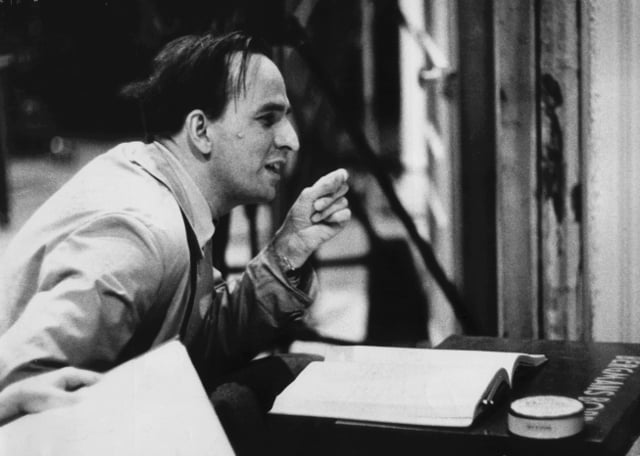 Ingmar Bergman in 1959. Photo: TT
Ingmar Bergman in 1959. Photo: TT
500 kronor – Opera singer Birgit Nilsson (1918-2005), Skåne
Birgit Nilsson may not be the first female Swedish opera singer to appear on a Swedish banknote, but at 500 kronor, her monetary value far exceeds that of her predecessor, Jenny Lind (1820-1887), who appeared on the 50 kronor note from 1996 to 2003. Like Lind, Nilsson was a soprano who became world famous.
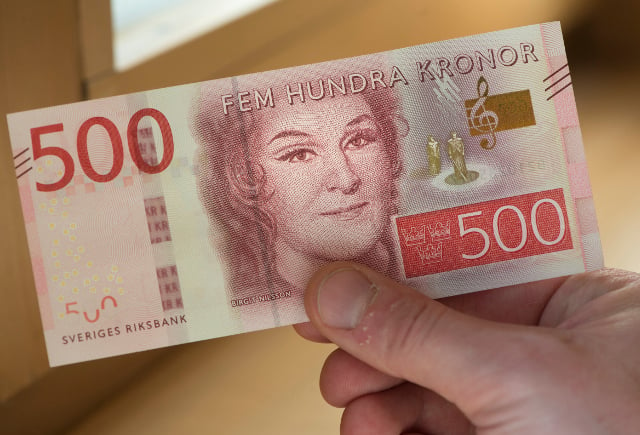
Opera singer Birgit Nilsson on Sweden's 500 kronor note. Photo: Fredrik Sandberg/TT
Already famous in Sweden during the 1940s, Nilsson was launched onto the world stage in the early 1950s with her powerful voice and incredible clarity and stamina in the high registers. Her talent enabled her to tackle notoriously difficult dramatic roles and made her the leading Wagnerian soprano in the 1960s and 1970s. New York Times music critic Anthony Tommasini wrote of Nilsson in 2006, "…it is almost impossible to convey what it was like to hear her in person. Even her recordings… do not do full justice to her singing."
Born north of Malmö in Västra Karup, Nilsson also died in Skåne county – represented on the flip side of the banknote – in Bjärlöv near Kristianstad. The Birgit Nilsson Museum near Båstad is located at the farm where Nilsson grew up, and hosts events and concerts in the late spring and summer months.
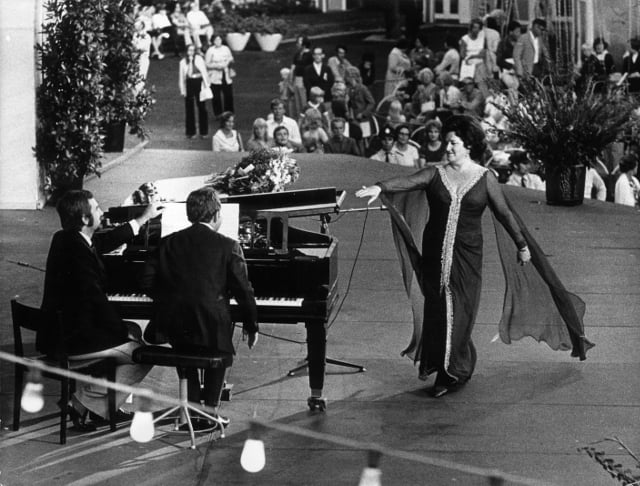
Birgit Nilsson performing in Stockholm in 1972. Photo: Bert Mattsson/TT
1000 kronor – Economist and diplomat Dag Hammarskjöld (1905-1961), Lapland
In 1961, American President John F. Kennedy called Dag Hammarskjöld, "the greatest statesman of our century." In 1953, at the age of 47, Hammarskjöld became the youngest person elected as Secretary-General of the United Nations. His untimely death in a suspicious plane crash in what is now Zambia on 18 September 1961, was a tragedy for Sweden and the world.
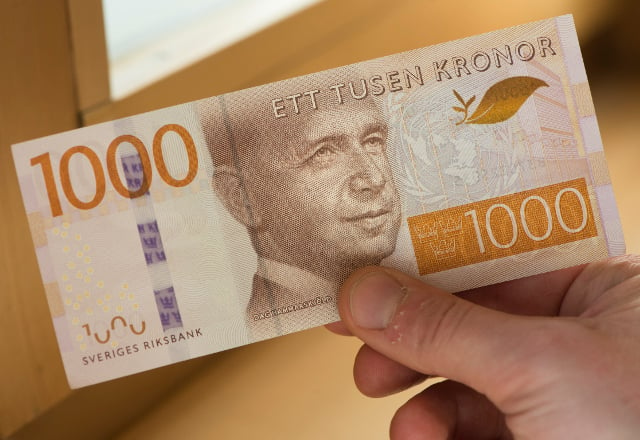
Dag Hammarskjöld was posthumously awarded the Nobel Peace Prize. Photo: Fredrik Sandberg/TT
Born in Jönköping, he was a dedicated civil servant who was greatly respected for his diplomacy and peacemaking efforts, making him the ideal person for Sweden's highest-value banknote. His death occurred while he was attempting to mediate peace during the Congo Crisis, and his commitment to that and other peace efforts was lauded when he was posthumously awarded the Nobel Peace Prize in 1961.
The significance of Lapland on the reverse of Hammarskjöld's banknote is an ode to his love of hiking in the mountains of that province. It was one of the subjects he wrote about in his journal of reflections, in which he often compared his life to climbing a mountain. The journal, which spanned 36 years of his life, was discovered after his death and published in 1963 as Vägmärken (Markings). Among the many beautiful passages that could easily serve as his epitaph is this entry from 1950:
"We are not permitted to choose the frame of our destiny. But what we put into it is ours. He who wills adventure will experience it – according to the measure of his courage. He who wills sacrifice will be sacrificed – according to the measure of his purity of heart."
So there you have it, in addition to history, culture and geography, your Swedish currency even offers a lesson in philosophy right at your fingertips.
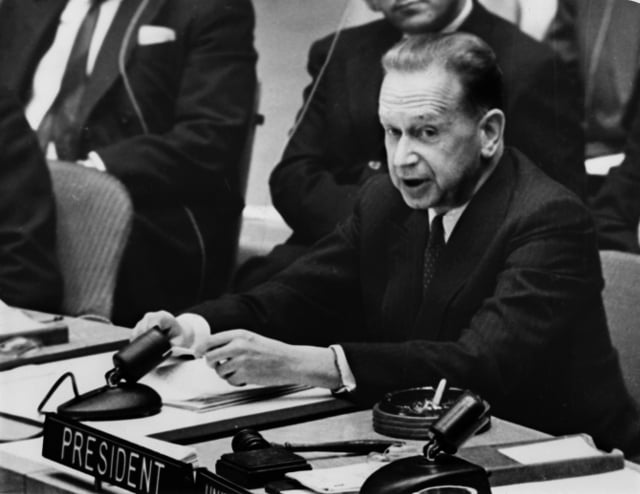
Dag Hammarskjöld in the UN General Assembly in 1961. Photo: UPI/TT
Victoria Martínez is an American historical researcher, writer and author of three historical non-fiction books. She lives in Småland county, Sweden, with her Spanish husband and their two children.
Read more from her family and history column on The Local here.
Comments
See Also
This article is available to Members of The Local. Read more about membership here.
Learning about Swedish history and culture can be as easy as looking in your wallet. Each banknote you carry has a story to tell about a famous figure from modern Swedish history on one side, and a geographical area of Sweden closely connected to his or her life on the other.
The six banknotes – ranging in value from 20 to 1000 kronor and released in two stages between in 2015 and 2016 – feature three women and three men who left an indelible impression not only on Swedish history, but world history as well. Learning a little about them might just help you feel more at home here in Sweden, not to mention make you sound very knowledgeable during fika small talk.
To get you started, I've put together a short history on the significance of each person and place, along with links to help you explore further on your own.
20 kronor – Writer Astrid Lindgren (1907-2002), Småland
Best known as the author of the Pippi Longstocking series of books, which have been translated into 70 languages, it might surprise some to learn that Astrid Lindgren was a prolific writer of dozens of other books for young people, as well as numerous plays, film scripts and songs. In addition, she wrote and advocated for children's rights and political and social issues in Sweden and abroad, including segregation in the United States.

Astrid Lindgren was born in Småland in south-eastern Sweden. Photo: Jessica Gow/TT
In a 1958 article in Skolbiblioteket (The School Library) magazine, Lindgren wrote: "I want to write for a readership that can create miracles. Children create miracles when they read. That's why children need books."
Lindgren flexed her political power to full effect in 1976 when she contributed a political masterpiece disguised as a fairy tale to Swedish newspaper Expressen entitled Pomperipossa i Monismania. Described as "a blistering attack on the Social Democratic government and its taxation policies", it is credited with contributing to that party's government being voted out of power later that year.
On the flip side of Lindgren's banknote is the province of Småland, a nod to her birthplace, Näs, which is located near Vimmerby in Kalmar county. While young fans of Astrid Lindgren enjoy Astrid Lindgren's World theme park in Vimmerby, adults can appreciate the author at the nearby Astrid Lindgren's Näs culture center.

Astrid Lindgren in her living room in 1962. Photo: TT
50 kronor – Musician Evert Taube (1890-1976), Bohuslän
Born in Gothenburg, Bohuslän province, to a father who worked as a ship captain and lighthouse keeper, it's little surprise that the sea was an important influence on Swedish composer and musician Evert Taube. His travels as a merchant seaman in the early 1900s carried him around the world, including five years in South America, where he was so taken with the musical rhythms that he incorporated them into his own music.

Evert Taube travelled the world as a merchant seaman. Photo: Fredrik Sandberg/TT
On returning to Sweden, he helped popularize the tango in his home country with songs like Fritiof och Carmencita (1937). But it was as a musician of Swedish ballads that he gained his greatest popularity and respect. American scholar of Scandinavian literature Susan Brantly wrote, "Evert Taube belongs to Sweden's strong tradition of troubadours and is one of its best-known and loved representatives."
Like several other Swedes featured on the country's banknotes, Taube applied his talent and influence to lobbying for social and political causes, with a particular passion for the environment. His 1971 song Änglamark, which he wrote for the Swedish film Äppelkriget, became the anthem for the Swedish environmental movement of the 1970s, and is today the name of a branded range of organic foods sold by Swedish supermarket chain Coop.

Evert Taube performing at Gröna Lund, Stockholm. Photo: Ragnhild Haarstad/TT
100 kronor – Actress Greta Garbo (1905-1990), Stockholm
A woman who needs little introduction, actress Greta Garbo was born in Stockholm as Greta Lovisa Gustafsson. It was under this name that she was discovered by MGM executive Louis B. Mayer when he saw her in the 1924 Swedish film, Gösta Berlings saga.

Greta Garbo, one of Sweden's most famous Hollywood stars. Photo: Anders Wiklund/TT
The film was based on the novel by another Swedish woman who has appeared on Swedish currency: Selma Lagerlöf (1858-1940). Published in 1891, Lagerlöf's debut novel launched a successful career that led to her becoming the first woman to win the Nobel Prize in Literature in 1909. As the first woman on a Swedish banknote, she was featured on the 20 kronor note from 1991 to 1995.
Although Garbo's Hollywood success meant that she spent much of her time in the United States and eventually became an American citizen, she was at her happiest and most comfortable when in Sweden. Writing to a friend in 1960, she wrote longingly: "I just think of how glorious it will be to come home. It will feel like coming out from a lovely bathe. Just imagine being able to walk about in peace, round all my old haunts."
There are plenty of Garbo's "old haunts" still to be found in Sweden, including Stockholm's Grand Hotel and her summer villa on the island of Ingarö.

Greta Garbo on her way to New York with director Mauritz Stiller in 1925. Photo: TT
200 kronor – Film Director Ingmar Bergman (1918-2007), Gotland
The banknote featuring Ingmar Bergman, one of the most famous and influential filmmakers in cinematic history, highlights on its reverse the part of Sweden most closely associated with him: Gotland. Although born in Uppsala, Bergman loved the island of Fårö, where he lived, shot films like Through a Glass Darkly (1961), and ultimately died.

Ingmar Bergman featured on the 200 kronor note. Photo: Jessica Gow/TT
Bergman masterpieces like The Seventh Seal (1957), Scenes from a Marriage (1973), and Fanny and Alexander (1982), not only became famous internationally, they also greatly influenced individual directors and the film industry in general. In an article following Bergman's death, American film critic and Time magazine editor Richard Corliss wrote, "For a generation of budding cinephiles… Film was literature. Movies were art. And Bergman was the Shakespeare of the cinema."
His life was not without controversy. While in Germany in 1934, he attended a Nazi rally, and later admitted he had admired Adolf Hitler. In 1976, he was charged by Swedish authorities with income tax evasion. Although the charges were quickly dropped, he left Sweden for several years to live in Norway and Germany. Despite these troubles, Bergman arranged the donation of his personal archives to the Swedish Film Institute, and the collection now forms the Ingmar Bergman Archives, which were added to the UNESCO World Heritage List in 2007.
 Ingmar Bergman in 1959. Photo: TT
Ingmar Bergman in 1959. Photo: TT
500 kronor – Opera singer Birgit Nilsson (1918-2005), Skåne
Birgit Nilsson may not be the first female Swedish opera singer to appear on a Swedish banknote, but at 500 kronor, her monetary value far exceeds that of her predecessor, Jenny Lind (1820-1887), who appeared on the 50 kronor note from 1996 to 2003. Like Lind, Nilsson was a soprano who became world famous.

Opera singer Birgit Nilsson on Sweden's 500 kronor note. Photo: Fredrik Sandberg/TT
Already famous in Sweden during the 1940s, Nilsson was launched onto the world stage in the early 1950s with her powerful voice and incredible clarity and stamina in the high registers. Her talent enabled her to tackle notoriously difficult dramatic roles and made her the leading Wagnerian soprano in the 1960s and 1970s. New York Times music critic Anthony Tommasini wrote of Nilsson in 2006, "…it is almost impossible to convey what it was like to hear her in person. Even her recordings… do not do full justice to her singing."
Born north of Malmö in Västra Karup, Nilsson also died in Skåne county – represented on the flip side of the banknote – in Bjärlöv near Kristianstad. The Birgit Nilsson Museum near Båstad is located at the farm where Nilsson grew up, and hosts events and concerts in the late spring and summer months.

Birgit Nilsson performing in Stockholm in 1972. Photo: Bert Mattsson/TT
1000 kronor – Economist and diplomat Dag Hammarskjöld (1905-1961), Lapland
In 1961, American President John F. Kennedy called Dag Hammarskjöld, "the greatest statesman of our century." In 1953, at the age of 47, Hammarskjöld became the youngest person elected as Secretary-General of the United Nations. His untimely death in a suspicious plane crash in what is now Zambia on 18 September 1961, was a tragedy for Sweden and the world.

Dag Hammarskjöld was posthumously awarded the Nobel Peace Prize. Photo: Fredrik Sandberg/TT
Born in Jönköping, he was a dedicated civil servant who was greatly respected for his diplomacy and peacemaking efforts, making him the ideal person for Sweden's highest-value banknote. His death occurred while he was attempting to mediate peace during the Congo Crisis, and his commitment to that and other peace efforts was lauded when he was posthumously awarded the Nobel Peace Prize in 1961.
The significance of Lapland on the reverse of Hammarskjöld's banknote is an ode to his love of hiking in the mountains of that province. It was one of the subjects he wrote about in his journal of reflections, in which he often compared his life to climbing a mountain. The journal, which spanned 36 years of his life, was discovered after his death and published in 1963 as Vägmärken (Markings). Among the many beautiful passages that could easily serve as his epitaph is this entry from 1950:
"We are not permitted to choose the frame of our destiny. But what we put into it is ours. He who wills adventure will experience it – according to the measure of his courage. He who wills sacrifice will be sacrificed – according to the measure of his purity of heart."
So there you have it, in addition to history, culture and geography, your Swedish currency even offers a lesson in philosophy right at your fingertips.

Dag Hammarskjöld in the UN General Assembly in 1961. Photo: UPI/TT
Victoria Martínez is an American historical researcher, writer and author of three historical non-fiction books. She lives in Småland county, Sweden, with her Spanish husband and their two children.
Read more from her family and history column on The Local here.
Join the conversation in our comments section below. Share your own views and experience and if you have a question or suggestion for our journalists then email us at [email protected].
Please keep comments civil, constructive and on topic – and make sure to read our terms of use before getting involved.
Please log in here to leave a comment.